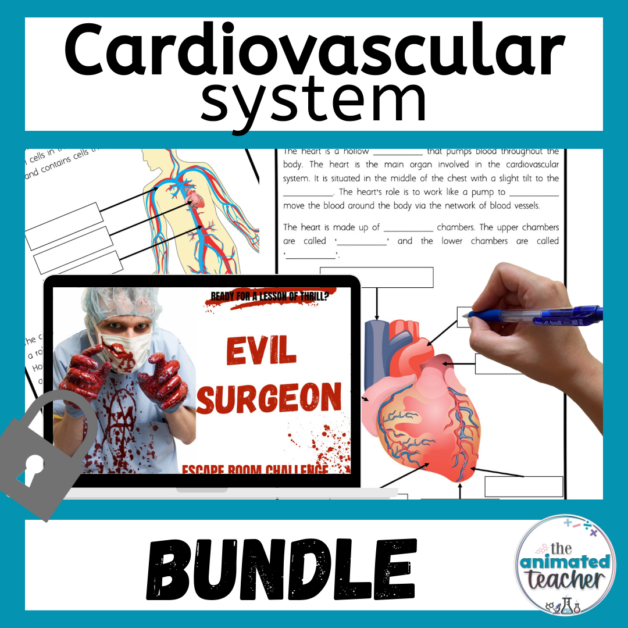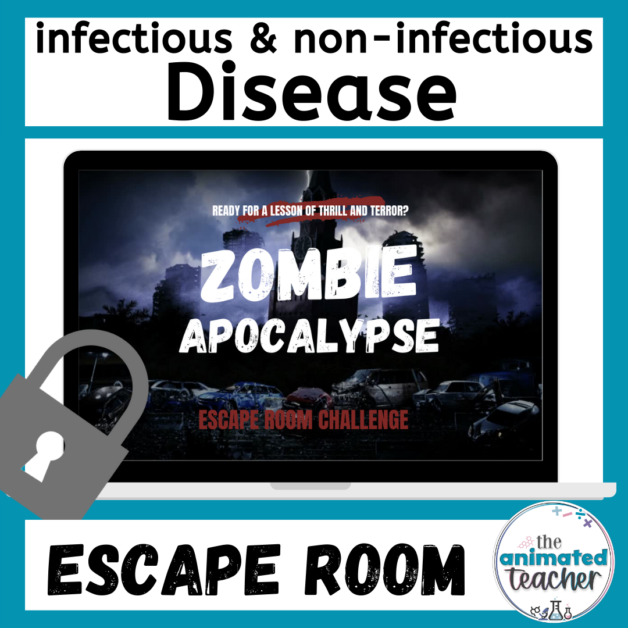
Virtual Dissection Labs: 15 FREE interactives
Virtual Dissection Labs: 15 FREE interactives
Biology is an interesting subject to teach in middle and high school. Not all students love to participate in dissections. From the complaining about the smell, to the fainting or nausea, the classroom can get thrown into the pit of chaos very quickly. Add some scalpels to the mix and it can be the opening to a horror film.
To mitigate disaster, I always love to have some virtual dissection labs on hand so that students can still participate, even if they don’t want to do the hands-on lab. Thankfully, technology can make this possible.
In this blog post I will explore reasons to use virtual dissection labs, as well as providing a list of 15 FREE interactive and virtual dissection labs.

Disclaimer: This blog post, ’15 FREE interactive and virtual dissection labs’, may contain affiliate links or links to resources that I have created. Read full disclaimer here. activ
Reasons to use virtual dissection labs
1. Engagement Beyond the Scalpel:
Traditional dissections, while valuable, often pose logistical challenges and can be messy affairs. Virtual dissection labs provide a clean and efficient alternative that engages students without the need for scalpels and formaldehyde. The interactive nature of these simulations allows students to explore and dissect various organisms with just a few clicks, fostering a sense of curiosity that extends beyond the physical limitations of the traditional dissection lab.
2. Inclusivity in Learning:
Virtual dissection labs break down barriers to entry that traditional labs might present. Students who may be uncomfortable with the tactile nature of dissections due to cultural, religious, or personal reasons can now participate fully in the learning experience. It promotes inclusivity, ensuring that every student, regardless of their background or preferences, has the opportunity to explore the wonders of biology.
3. Cost-Effective and Sustainable:
Let’s face it; quality dissection specimens and materials can be expensive. Virtual dissection labs eliminate the need for constant replenishment of supplies, saving both time and budget.
4. Repeat and Review at Will:
With virtual dissections, the learning experience doesn’t end when the bell rings. Students can revisit and repeat the dissection process as many times as needed, reinforcing their understanding of anatomical structures. This feature accommodates different learning styles and paces, allowing each student to grasp concepts thoroughly before moving on.
5. Real-world Connections:
Virtual dissection labs offer an opportunity to connect the theoretical concepts taught in the classroom with real-world applications. Simulations can replicate diverse environments, showcasing the adaptations and interdependencies of different species. This not only enhances the students’ understanding of biology but also emphasizes the ecological context of the organisms being studied.
6. Technological Fluency:
In an era dominated by technology, it is crucial for students to develop technological fluency. Virtual dissection labs expose them to advanced software, honing their digital literacy skills. These skills are not only valuable in the field of biology but are increasingly essential in many professions in our technology-driven society.
7. Time Efficiency:
Traditional dissections can be time-consuming, often spanning multiple class periods. Virtual dissections, on the other hand, can be completed in a fraction of the time, allowing teachers to cover more material within the constraints of a standard class schedule. This time efficiency opens up possibilities for exploring additional topics or conducting supplementary activities.
The integration of virtual dissection labs into your biology classroom offers a multitude of advantages. From fostering inclusivity and sustainability to promoting technological fluency and real-world connections, these tools are propelling biology education into the future. Embrace the change, and watch your students dissect not only specimens on the screen but also the barriers to their own learning potential.
My favorite no-prep early finisher activities
FREE virtual dissection labs:
Human anatomy
- HUMAN BODY SYSTEMS: The InnerBody Website contains FREE interactive body system maps for each of the human body systems. Zoom in to each part of the different body systems with the interactive 2D map. Or change over to a 3D view to see how the various parts all work together.
- NEURON SIMULATION: Explore the parts and function of a neuron in the nervous system with PhET’s interactive neuron simulation.
- NEURONS VIRTUAL LAB: Biointeractive also has an Exploring neurons virtual lab
- MUSCULOSKELETAL SYSTEM: Explore the muscular system and skeletal system with interactive games like ‘poke a muscle’ and ‘whack a bone’ at the Anatomy Arcade.
- CARDIOLOGY VIRTUAL LAB: The Cardiology virtual lab allows students to explore cardiology and how to diagnose patients with heart conditions.
- EXTERNAL EAR INTERACTIVE: The AnatomyZone has a 3D interactive that allows students to explore the features of the external ear and its connections to the nervous system.
- HUMAN BODY SYSTEMS: Zygote Body has a 3D interactive where students can view each of the body systems in 3D.
FREE virtual dissection labs:
Animal anatomy
- ANATOMY OF A DOG: The Anatomy of a dog interactive allows students to understand the musculoskeletal system and nervous system in the context of how a dog bears weight, moves and behaves.
- VIRTUAL FROG DISSECTION: Froggy has an interactive, Virtual frog dissection and build-a-frog game to test student knowledge of the parts of the frog and their location.
- VIRTUAL PIG DISSECTION: Even though it is virtual, the Virtual Pig Dissection is not for the faint of heart. The images are realistic and detailed.
- CAT ANATOMY: Virtual cat anatomy explorer is a 3D virtual activity where students can delve into the anatomy of a cat and how the cat’s organs and body systems work together
- BIRD FEATURES: Use this interactive to build a bird.
- MARINE LIFE: Explore the features of marine life through this 3D marine life app.
- FISH VIRTUAL LAB: Explore the anatomical structure of a stickleback fish in this virtual lab. Includes student and teacher resources.
- LIZARD EVOLUTION: The Evolution of the lizard virtual lab allows students to step back in time to explore the features of lizards and how they have evolved over the years.
Conclusion
Virtual dissection labs are a great way to engage students in learning about human and animal biology.
Save this blog post and integrate these different technologies in your classes!
Early Finisher Activities in Science
About the Author

Early Finisher Activities in Science



































